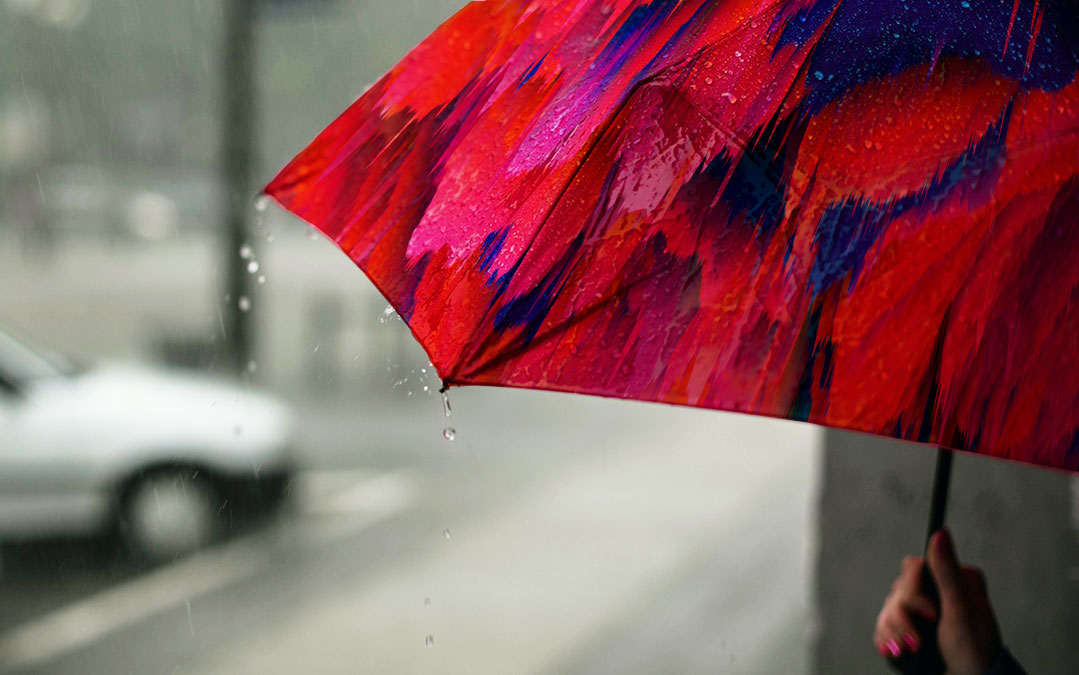We don’t know for sure what causes SAD, but it’s probably related to light exposure, which can interfere with your body’s natural circadian rhythms (your internal “clock”) as well as your production of hormones and neurotransmitters related to sleep and mood, such as melatonin, serotonin, dopamine, and vitamin D. Women suffer from SAD more often than men, and it may have a genetic component.
Not surprisingly, it’s most common in people who live in the least sunny places on earth—epidemiological studies on the disorder show that it’s most prevalent at northern latitudes (like most of the U.S.), and is more likely to occur in people who have other mood or mental health disorders, like anxiety or depression. In general, symptoms of depression are more common in winter in the general population, and the more extreme form of this, SAD, is known to be relatively common.
If you feel seriously depressed in the winter, please see a doctor—SAD is highly treatable with medication and light therapy. If your case is mild and manageable but you know you’re susceptible to those winter blues (like I am) and you’d like to sleep better, have more energy, and feel a bit more in control of those winter carb cravings, you might be glad to know that there are some easily accessible therapies for SAD that don’t require going to a doctor. Here are my go-tos.
DIY Light Therapy
One of the most effective treatments for SAD is light therapy, and you can treat yourself with a light box designed just for this purpose. Light boxes are electronic devices that project full-spectrum light. Sitting in front of them during the day can give many SAD sufferers profound relief, further validating the theory that lack of sunlight is the primary cause. They used to be mostly available by prescription only, but they are now widely available to anyone online.
Look for a light box that advertises 10,000 lux (a measure of how much light exposure you will get from the device). I recommend sitting within 2 feet of a lightbox with 10,000 lux intensity for at least 30 minutes per day, preferably soon after waking up in the morning. This could help your mood throughout the rest of the day, and is in synch with natural circadian rhythms. Look for a light that emits little or no UV light, and be sure your eyes are exposed–the light needs to hit your retina, to have its effect. (Talk to your doctor first if you have any eye problems such as glaucoma or cataracts.)
By the way, if you’re thinking that you can get your sunlight dose (and a bit of color) from a tanning booth during the winter, don’t run off to the tanning salon just yet. While tanning could theoretically help to some degree (perhaps by increasing vitamin D production), the skin cancer risks are far too high. Besides, since you get the light benefits through your eyes and you have to keep your eyes shielded in a tanning booth, you won’t get nearly the benefit you can get from a light box. Tanning booths emit high levels of UV light, which are dangerous for your eyes as well as your skin.
Go Outside
A light box can give you more full-spectrum light than going outdoors on a dreary winter day, but even so, there is nothing better for mood-boosting and SAD-busting than going outdoors. I would argue that lack of time in nature is one of the primary reasons why people don’t feel good during the winter. If you possibly can, I recommend stepping outside, even if just for a few minutes, but ideally for 30 to 60 minutes on most days, even if it’s chilly (but use common sense, and gloves and a hat, please!).
The mental health benefits of walking through natural areas, breathing in fresh air, and marveling at the winter wonderland, are profound. Humans are designed to be outside. Our ancient programming hasn’t really changed, even though we live indoors most of the time now. Give yourself a good daily dose of nature and I can practically guarantee you’ll notice the difference in your energy and mood. The more regularly you go outside, the better the effects, especially if you spend that outside time in natural areas, like in wooded areas or near bodies of water.
Eat to Beat SAD
You are probably expecting me to say something about food, and of course I will! There are some foods that can certainly help to alleviate SAD. Here are the ones I have found to be most effective:
- Fatty fish. Omega-3 fatty acids are great for combating depression because they encourage serotonin and dopamine production. Look for those cold-water fatty fish I so often recommend: salmon, mackerel, sardines, and anchovies.
- Healthful plant fats. Other good-fat sources for boosting mood: avocadoes, dark chocolate (at least 80% cacao), raw walnuts, and Brazil nuts (Brazil nuts also have selenium—selenium deficiencies are common in people with depression).
- Beans and roots. SAD often comes with cravings for simple carbs, and the best solution I’ve found to this is to eat complex, slower-absorbing carbs. The best sources are legumes, like lentils, black beans, and white beans, as well as root vegetables like sweet potatoes, carrots, and beets. These can calm carb cravings while providing microbiome-enhancing fiber and resistant starch along with many important vitamins and minerals you won’t get from starchy junk foods and sugar. They will also keep your blood sugar steady—something you won’t get from that package of cookies!
- Dark leafy greens. The B vitamins in dark leafy greens, like kale, spinach, collards, and chard, can help to regulate your serotonin levels, which we know can dip too low in people who suffer from SAD.
As for supplements, I highly recommend a vitamin D3 supplement. Your body produces this “sunshine vitamin” in response to sunlight on your skin. No sunlight, no vitamin D production, and most people who don’t live in the tropics are deficient, at least by my (functional medicine) standards. A daily dose of 5000 IUs during the winter may help balance your mood and increase your energy.
Move Anyway
One of the hallmarks of SAD is low energy and a feeling of sluggishness. Moving may be the last thing you want to do, but even 20 minutes of low-intensity aerobic activity on most days can make a big difference in SAD symptoms. A winter walk, an indoor yoga session, or an online exercise class may be all you need to start feeling more energy during the day and sleeping better at night.
It’s no fun to be SAD, but you can beat it. I know how it feels and I have to work at this, but I’ve also found great relief with these self-care strategies, which is why I wanted to share them with you. Do you struggle with SAD? Have you tried any of these suggestions? Do you have other solutions that have worked for you? Let me know, and we can get through the rest of this winter together!
SOURCES:
https://doi.org/10.1034/j.1600-0447.2000.101003176.x
https://doi.org/10.1081/CBI-120019310


